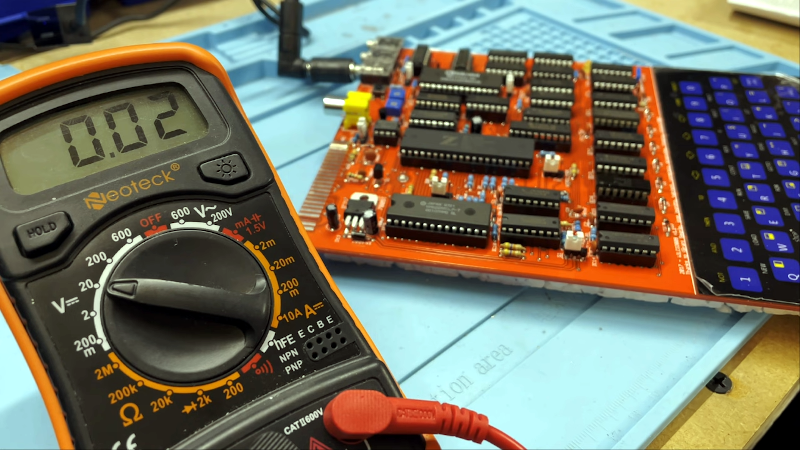Build a New ZX81

[Retro Shack’s] ZX81 died, and while he tried to figure out the fix, he decided to build a new one. Of course, building a circa-1980-something computer from new parts is …read more Continue reading Build a New ZX81
Collaborate Disseminate

[Retro Shack’s] ZX81 died, and while he tried to figure out the fix, he decided to build a new one. Of course, building a circa-1980-something computer from new parts is …read more Continue reading Build a New ZX81
A popular project among Hackaday readers is to recreate a piece of home computing or gaming hardware from the past, and in that endeavour we’ve seen some truly amazing projects. Usually they take the form of bare PCBs or custom cases that look nothing like the original, but not [Cees …read more
What would you think if you saw a bootleg of a product you design, manufacture, and sell pop up on eBay? For those of us who don’t make our livelihood this way, we might secretly hope our blinkenlight project ends up being so awesome that clones on AliExpress or TaoBao end up selling in the thousands . But of course anyone selling electronics as their business is going to be upset and wonder how this happened? It’s easy to fall into the trap of automatically assigning blame; if the legit boards were made in China would you assume that’s where …read more
In Western countries in the early 1980s, there was plenty of choice if you wanted an affordable computer: Apple, Atari, TRS-80, Commodore and Sinclair to name a few. But in communist-ruled Romania, mainly you’d find clones of the British Sinclair ZX Spectrum, an 8-bit computer built around the Zilog Z80A, using a CRT TV as display and a BASIC interpreter as UI. The Cobra was one such Romanian Sinclair clone. However, most people couldn’t afford even that, which lead to hackers building their own versions of the Cobra.
Making these clones was highly illegal. But that didn’t stop students at …read more
![]() Continue reading Romania’s 1980s Illicit DIY Computer Movement
Continue reading Romania’s 1980s Illicit DIY Computer Movement
From the blog of [telmomoya] we found his latest project: a hardware based multicore solution for a ZX Spectrum Emulator. It’s not the first time we feature one of his builds, last year we was working on a ARM Dual-Core Commodore C64. Luckily for Speccy fans, it seems a ZX Spectrum project was just unavoidable.
At its heart is the EduCIAA NXP Board, a Dual Core (M4 & M0) 32-bit microcontroller, based on the NXP LPC4337. It’s an Argentinan-designed microcontroller board, born from an Argentinian academic and industry joint venture. [telmomoya] took advantage of the multicore architecture by running the …read more
From the blog of [telmomoya] we found his latest project: a hardware based multicore solution for a ZX Spectrum Emulator. It’s not the first time we feature one of his builds, last year we was working on a ARM Dual-Core Commodore C64. Luckily for Speccy fans, it seems a ZX Spectrum project was just unavoidable.
At its heart is the EduCIAA NXP Board, a Dual Core (M4 & M0) 32-bit microcontroller, based on the NXP LPC4337. It’s an Argentinan-designed microcontroller board, born from an Argentinian academic and industry joint venture. [telmomoya] took advantage of the multicore architecture by running the …read more
At the end of the 1970s, the 8-bit home computer market had been under way for several years. Companies like Apple and Commodore had produced machines that retain a cult following to this day, and there was plenty for the computer enthusiast to get to grips with. As always though with a new technology, the trouble was that an Apple II or a Commodore Pet wasn’t cheap. If you didn’t have much cash, or you were a young person with uncomprehending or impoverished parents, they were out of reach. You could build a computer from a kit if you were …read more